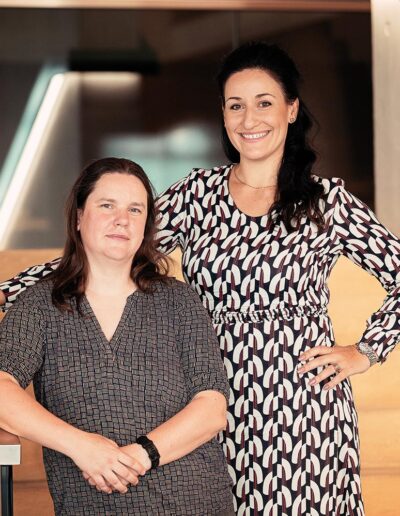Gesagt – getan! Die beiden skizzieren euch hier, welche Idee an unserem FIF also geboren wurde – und wir wir sie gemeinsam weiterspinnen könnten. Da die beiden Autoren muttersprachlich englisch sind, posten wir diesen Artikel entsprechend in englischer Sprache.
Viel Spass beim Lesen – und meldet euch, wenn ich euch mit den beiden Unternehmern vernetzen darf.
Herzlichst, eure Sandra-Stella
Can Blockchain Save The Insurance Industry?[1]
(Out of scope is Health Insurance which can be heavily state run in various countries)
The issues with insurance
The insurance industry is one of the most conservative when it comes to the notion of change and transformation – not only operationally but rather its relevance to “customers” whether these be enterprises, institutions, or consumers like you and I.
Fundamentally, we observe “pooling or the aggregation of risks.”
This pooling is subject to the “Law of Large Numbers” which, in this specific context means that the more risks that are pooled into an insurance pool, the less likely it is that the pool will gave an unusual or unexpected number of claims <high or low>. The Law of Large Numbers means that it is much more likely that the actual results of how many car accidents occur will match the 10% rate the more cars are insured in the insurance pool. In other words, it is much more likely that something close to 100,000 accidents occur out of 1,000,000 cars than it is that something close to 10 accidents occur out of 100 cars. So, for insurers, it is less risky to insure large pools of customers than small groups of customers as the results are more predictable. Product development, underwriting claims and investment are all non-trivial functions in the insurance industry . So let’s understand the Insurance industry at a macro level. Reinsurance is when one insurer transfers some or all of a certain insured risk to another insurer for a certain price <premium> sometimes known as “insurance for insurers” Why reinsurance? Stabilizing underwriting results permits firms to cede underwriting risk from new policies for which they do not know the likely claims as an example. Or achieving risk concentration or diversification allows insurers to adjust their risk profile if they become overly concentrated or diversified vs certain risks that they want to insure.
Insurance is one of the most regulated parts of the financial services industry. While insurance regulation is broad, the two main areas of concern are solvency and consumer protection. Solvency is the greatest concern of regulators as insurance companies collect premiums upfront and then invest them, in order to be able to pay estimated claims years or decades into the future. This leaves opportunity for mischief if not carefully managed. Therefore, insurance companies have long-lived claims, meaning that they need to be managed conservatively to protect future claimants. Insurance profitability is driven by skill/discipline in underwriting, efficiency/effectiveness In operations and string investment results. There is a temptation to weaken underwriting discipline to gain access to float in order to generate investment income.
Today, even with advanced technology, the insurance process is more antiquated than it needs to be and, arguably wasteful in terms of resources consumed. While some areas of insurance of a “commodity” nature, such as auto insurance which can be bought online, purchasing it for large capacity items still largely follows a classical path. And in both cases, “true risk profile discovery” (underwriting), reserves setting for claims are still not sufficiently fact and data based and hence often opaque.
Introducing the Blockchain
So where does blockchain fit in this narrative and more importantly what are the building decentralized insurance system based on blockchain and further enabled by AI? Whilst the aforementioned issues are challenging the question at hand is creating more “transparency” and “trust” for customers/consumers as a whole.
The bold vision is to think beyond inter-insurance company/organizations and what these institutions are exploring with blockchain e.g. streamlining payment claims .
The opportunity is to improve transparency and auditability by granting instant access for executives, clients and regulators anytime.
For underwriting, if the algorithm is naïve it will be gamed by higher-risk or fraudulent
Insured parties which will ultimately collapse the risk pool.
Further, insurance companies need to be able to meet claims far in the future.
This implies two things:
- That their reserves/assets are auditable.
- That their reserves can be invested prudently to grow to meet those claims (because pricing from competing organizations will take into account asset growth.
The impact this could have
The insurance underwriting process can only improve in its risk profile and price discovery activity. Faster too since historic and new, incoming data will be accurate, verified and easily available. Equally for the claims process. Technology, where IoT, BC and AI converge will be the big enabler as, exemplified by the possibilities with cloud technology.
In the traditional three-party triangle of Client(Insured)-Broker-Insurer, the Broker’s role will be challenged. If not immediately in their presence in the process, then certainly in the risk profiling and pricing process, not to mention their own fees.
Blockchain based insurance company/mutual/cooperative:
- Could prove solvency easily as it could provide continuously auditable records on the blockchain.
- However would struggle to convince that cryptocurrency-only investments would be prudent (too volatile to support long-term claims).
- This means for the investment function of an insurance company to work, the issue of representing other assets on the blockchain would have to be resolved, whether through colored coins, sidechains, etc.
- Once the “other investment assets” issue is solved however, this seems an area that is
- Assets could be invested based on established formulae, indexing across asset classes, while being continuously auditable.
- Having said that, blockchain and peer to peer value exchange has existed since 2009 [2][Satoshi Nakamoto’s Paper]. ; there will be logical resistance to entrusting them for claims that might be triggered 60 years from now, as there are too many variables to consider.
- This means that claims with shorter time-cycles (e.g. auto) are likely to be the first to be viable on a decentralized platform.
- Information pertinent to underwriting and claims management is always verified, reliable, easily accessible
- Pertinent accessible information can be cloud stored or exist within a cloud computing services architecture. This would diminish the broker’s role significantly.
The fundamental drivers for integrating (BC) technology (together with AI) are: (process) cost reductions, better management of risk exposures and more accurate reserves and solvency calculations.
“Saving” the insurance industry? You decide.
[1] Source Material: University of Nicosia, Digital Currency Program.
[2] https://bitcoin.org/bitcoin.pdf
Weiterführende Informationen:
2019.leagueofleadingladies.com





















